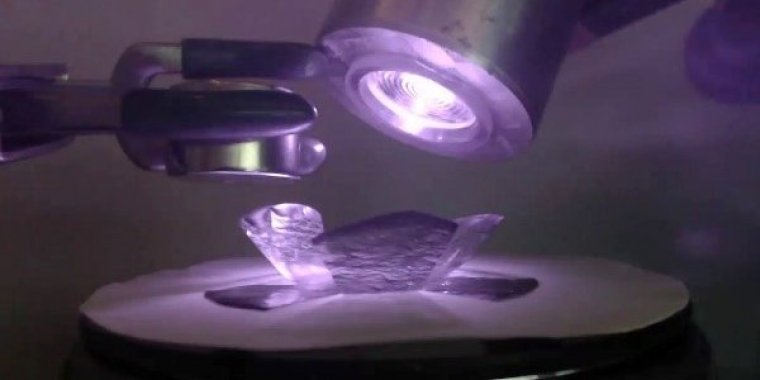| News / Science News |
Technique uses magnets, light to control and reconfigure soft robots
Researchers from North Carolina State and Elon Universities have developed a technique that allows them to remotely control the movement of soft robots, lock them into position for as long as needed and later reconfigure the robots into new shapes. The technique relies on light and magnetic fields.

An LED causes rotation to bend petals in different directions. Photo: Jessica A.-C. Liu
"By engineering the properties of the material, we can control the soft robot's movement remotely; we can get it to hold a given shape; we can then return the robot to its original shape or further modify its movement; and we can do this repeatedly. All of those things are valuable, in terms of this technology's utility in biomedical or aerospace applications," says Joe Tracy, a professor of materials science and engineering at NC State.
In experimental testing, the researchers demonstrated that the soft robots could be used to form "grabbers" for lifting and transporting objects. The soft robots could also be used as cantilevers or folded into "flowers" with petals that bend in different directions.
"We are not limited to binary configurations, such as a grabber being either open or closed," says Jessica Liu, first author of the paper and a Ph.D. student at NC State. "We can control the light to ensure that a robot will hold its shape at any point." (National Science Foundation)
YOU MAY ALSO LIKE





